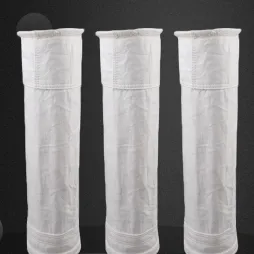How to choose the right filter bag for your filtration needs?
Choosing the right filter bag for your filtration needs is crucial to ensure effective and efficient filtration. Here are some key considerations to help you select the appropriate filter bag:

Understand Your Filtration Requirements:
Identify the specific purpose of filtration: Whether it's removing solids, capturing fine particles, or separating liquids from solids.
Determine the particle size range: Consider the size of particles you need to capture or retain.
Define the operating conditions: Take into account temperature, pressure, and chemical compatibility requirements.
Material Selection:
Assess the chemical compatibility: Choose a bag filter material that is resistant to the chemicals and substances present in your process stream.
Consider temperature tolerance: Select a filter bag material that can withstand the temperature conditions of your application without compromising performance.
Evaluate physical properties: Consider factors such as abrasion resistance, flexibility, and dimensional stability based on your specific filtration needs.
Filter Bag Construction:
Determine the type of filter bag: There are different types available, including sewn bags, welded bags, and fully-welded bags. Each has its advantages, such as enhanced durability, reduced bypass, or compatibility with high-temperature applications.
Assess the sealing mechanism: Consider the sealing method required for your filtration system, whether it's a snap ring, collar, or sewn-in sealing mechanism.
Efficiency and Performance:
Evaluate filtration efficiency: Determine the level of filtration efficiency required based on the particle size and quality of filtration desired. Look for primary filter bags with appropriate micron ratings or efficiency classifications.
Consider flow rate and pressure drop: Ensure the filter bag can handle the flow rate and maintain an acceptable pressure drop for your system.
Size and Configuration:
Determine the dimensions: Measure the available space in your filtration system to ensure the filter bag fits properly.
Evaluate the configuration: Decide on the shape and style of the filter bag (e.g., cylindrical, flat, or pleated) based on your equipment and filtration requirements.
Consider Maintenance and Cost:
Assess the filter bag lifespan: Evaluate the expected lifespan of the filter bag based on your process requirements. Longer-lasting filter bags may reduce replacement and maintenance costs.
Consider the cost-effectiveness: Compare the initial cost of the filter bag with its expected performance and lifespan to determine the most cost-effective option for your filtration needs.
Consult with Experts:
Seek advice from filtration specialists or suppliers who can provide expertise and guidance on selecting the right filter bag for your specific application.
Remember to review and follow the manufacturer's recommendations and guidelines for proper installation, use, and maintenance of the chosen filter bag. Regular monitoring and maintenance of the filtration system will help ensure optimal performance and longevity of the filter bags.


评论
发表评论